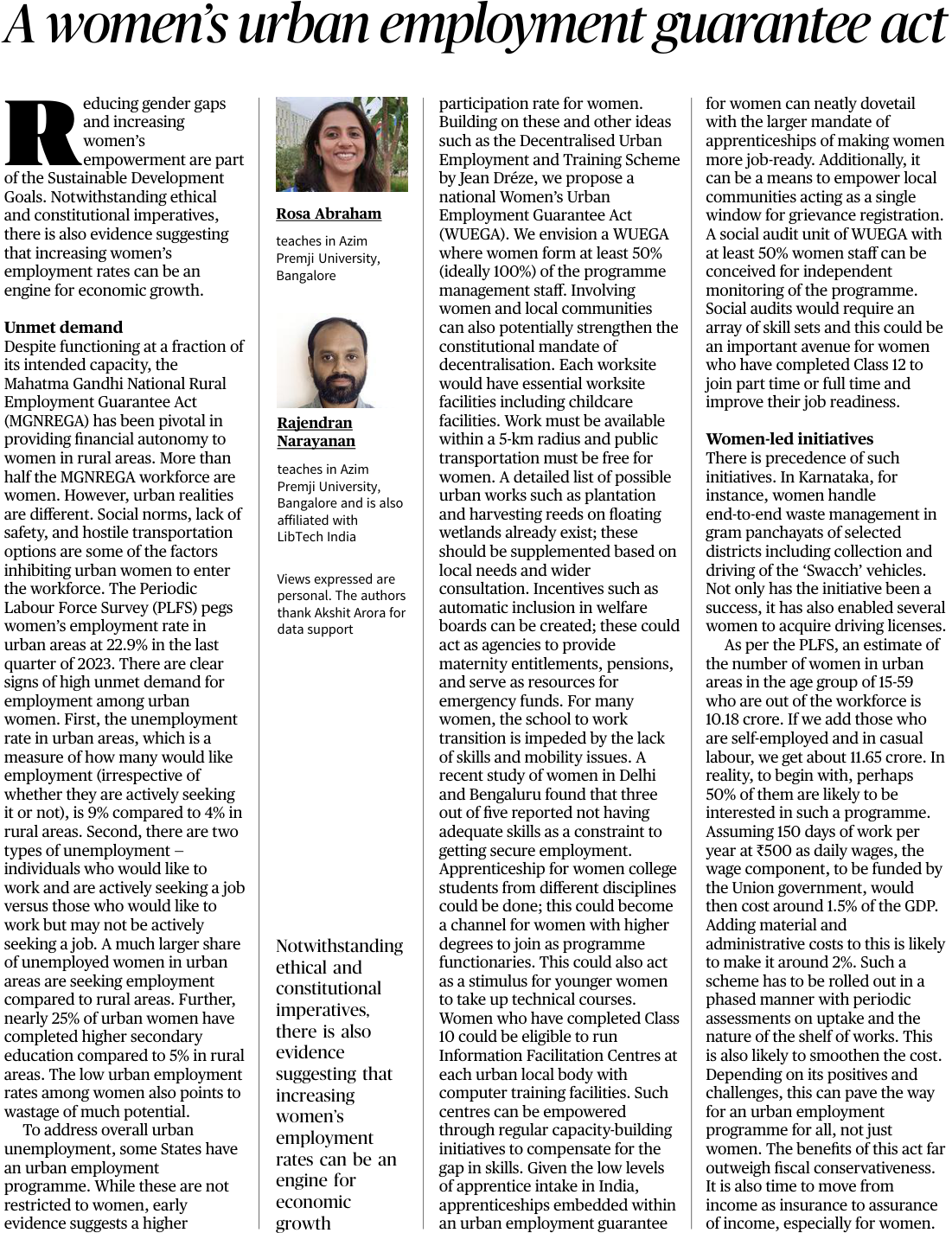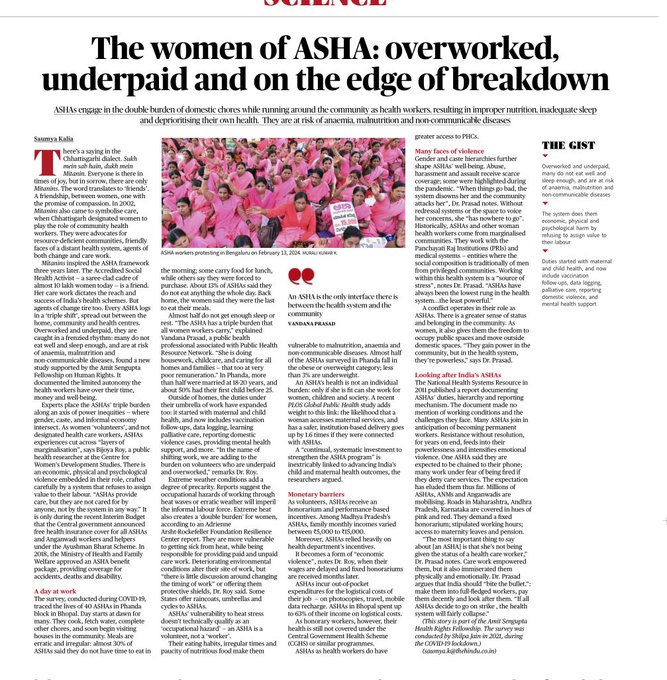https://twitter.com/FareedZakaria/status/1792259556766105698
This a continuation of the Labour Notes South Asia (LNSA) dispatches | We also hope to build a partial archive of posts from the original LNSA mailing list (2000 to 2019) (see list URL) | See archived posts 2004-2005 | [the full webarchive of the list is now unavailable as it has been permanently removed by yahoo on Dec 2019]
Monday, May 20, 2024
Wednesday, March 27, 2024
Labour segmentation in NCR Delhi’s automobile sector: a political response of capital to labour struggles | Shreya Ghosh & Ritajyoti Bandyopadhyay
The Third World Quarterly
Received 06 Jul 2023, Accepted 04 Mar 2024, Published online: 23 Mar 2024
https://doi.org/10.1080/01436597.2024.2327457
Taylor & Francis Online
Abstract
This paper aims to understand the changing dynamics of internal labour market segmentation intertwined with the history of working-class struggle in an industrial belt in India’s National Capital Region (NCR). Nuances of workers’ class struggle in the automobile sector in Delhi-NCR over the last 15 years have shown that unity between permanent and contract workers was key to several successful struggles against worsening work conditions and management control within the global value chains of automobile production. Our fieldwork findings, along with direct and indirect political engagement in the region, reveal that increasing salaries and allotment of supervisory roles to small sections of permanent workers, coupled with the simultaneous fragmentation a lower strata of workers into multiple categories with very low salaries, benefits and heavy workloads, have been significant attempts by capital to break class solidarity among different sections of workers. Relatively pro-labour legislation and trade unions tend to concentrate in high-wage zones, while low-wage and precarious employment remains unprotected by such institutional mechanisms. Labour segmentation is inherent to capitalist exploitation, guarded by institutional mechanisms. Advanced mechanisation reduces distinction of skill requirements between highly paid permanent and lowly paid contract workers. In this context, labour segmentation is a political response to trade unionism from the side of capitalist management.
Monday, March 18, 2024
Friday, March 8, 2024
Tuesday, March 5, 2024
‘India-B’desh FTA threat to local textile industry’
‘India-B’desh FTA threat to local textile industry’
Paper on Gender Division of Work and Wages in Rural India
GENDER DIVISION OF WORK AND WAGES IN
RURAL INDIA
https://fas.org.in/wp-content/uploads/2024/03/Work-Package_1_paper-on-wages.pdf
Monday, March 4, 2024
Thursday, February 29, 2024
Video: "The Sterlite Plant in Tuticorin Must be Dismantled" | NewsClick, (2018)
Paranjoy Guha Thakurta talks to M G Devasahayam about the killings at the Tuticorin Sterlite plant
Friday, February 23, 2024
Saturday, February 10, 2024
India: Ten-Year Record on Employment: Does the Reality Match the Promises or Claims? | Santosh Mehrotra
The Wire
Ten-Year Record on Employment: Does the Reality Match the Promises or Claims?
GOI efforts to spin a jobs growth narrative has meant the following: it is not willing to recognise a glaring problem, and hence no concrete efforts are needed to change economic policy to make the growth pattern more labour-intensive.
The current regime started with pretty impressive promises in 2014 with respect to employment (two core jobs a year). If realised, by March 2024, 40 crore new jobs should have materialised. Have they? If not, what is the reality?
The reversal of employment growth in non-farm sector and little progress in Skill India
The reality is the following. First, open unemployment was barely 2.1% in 2012 (the last year for which data was available before the BJP came to power). It had already nearly tripled to 6.1% in 2018 (National Survey Organization’s Periodic Labour Force Survey (PLFS), conducted annually since 2017-18), the highest rate in 45 years of India’s labour force surveys.
The total number of unemployed was one crore (2012) before the BJP came to power – but it had tripled by 2018 to three crore. The youth unemployment rates went through the roof for: those with middle school (class 8) education it rose from 4.5% to 13.7%; with secondary education (class 10) from 5.9% to 14.4%; those with higher secondary (class 12) education from 10.8% to 23.8%.
Educated unemployment worsened sharply. For graduates, the unemployment rate rose from 19.2% to 35.8%; and for post graduates from 21.3% 36.2%. All this did not deter the Government of India (GOI) from announcing a New Education Policy 2020 that higher education enrolment should rise from the prevailing 27% (for the relevant age cohort of 18-23 year olds) to nearly double to 50% by 2035. How are these new higher education graduates supposed to be employed, if the current crop of graduates face rising unemployment.
ls Report 2021 argues that nearly half of India’s graduates are unemployable, i.e. education quality in our colleges/universities has deteriorated sharply, most noticeably after the massification of higher education in the last two decades. Two developments underlie this phenomenon. First, the number of affiliated colleges (attached to universities, where the exam is conducted by the state or central university) has grown in India from around 10 000 in the early 2000s to 42 000 to 2020. The Universities (let alone the University Grants Commission) have limited capacity to regulate or monitor the activities of such colleges; yet they have grown at a rate of 4 new colleges per day, without a weekend break. Two, most of these colleges are private, set up by builders and contractors, in connivance with local politicians, who are often elected to high offices. If this pattern of private college growth, the quality is unlikely to improve, so unemployment may remain much the same – if non-farm jobs do not grow fast enough to absorb new entrants.
[ . . . ]
Wednesday, January 17, 2024
Wednesday, January 10, 2024
Reproducing Dispossession and Erasure within a Waste Picker Organization in Mumbai | Sneha Sharma
IJURR Vol 47. Number 5 September 2023
GEOGRAPHIES OF EXCLUSION:
Reproducing Dispossession and Erasure within a Waste Picker Organization in Mumbai
by Sneha Sharma
Abstract
A rich seam of waste scholarship already addresses the exclusion faced by informal waste workers as cities in the global South undergo spatial transformations to become ‘world class’. However, less attention has been paid to how state practices have reproduced inequalities within and across waste picker communities. Drawing upon eleven months of ethnographic research at Mumbai’s Deonar dump site, this article maps the practices through which waste workers have responded to their exclusion following a massive fire in 2016. It demonstrates that social exclusion is experienced differently by different members of the community and calls for a greater focus on heterogeneity amongst waste workers. Multi-dimensional vulnerabilities manifest through these workers’ deal-making strategies, while simultaneously mirroring the conditions of marginality produced by the state. The article contributes to debates on marginality by employing the lens of erasure to show how exclusion relies on the optics of visibility and invisibility. By unpicking the hierarchical structure within one waste worker organization, the article argues that the state-led mandate for garbage-free cities in India disproportionately affects those located at the margins of marginalized groups.
DOI: 10.1111/1468-2427.13204


